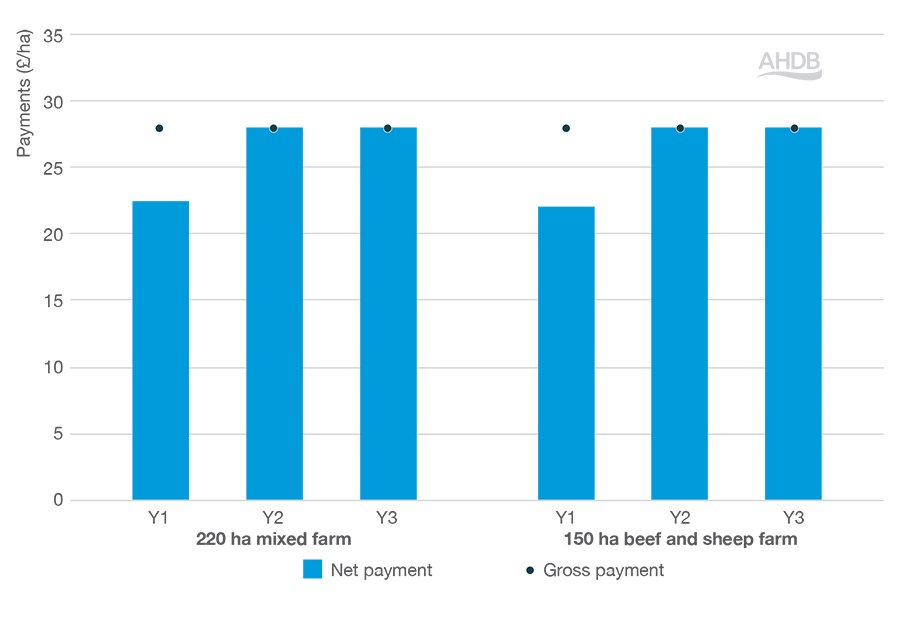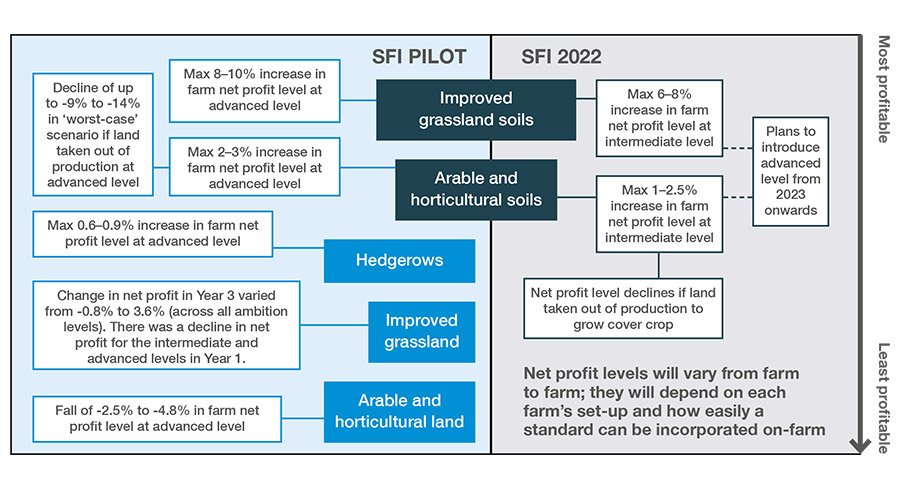Farmers are undeniably facing a lot of change and challenges at present. The removal of Direct Payments and phasing in of the Environmental Land Management Schemes (ELM) is a key example of where farm businesses will need to adapt but in order to do this, it’s vital that farmers have all the information they need to help ensure that they can make a well-informed decision
The Sustainable Farming Incentive (SFI), is the most farmer-focused component of ELM, and aims to reward farmers for carrying out actions on their individual farms which benefit the environment. The SFI pilot is currently underway, having started towards the end of 2021 and the wider rollout of the scheme is due to begin in summer 2022.
AHDB, alongside Harper Adams University, has looked at farmer attitudes towards the changes in English agricultural policy, including their plans to mitigate the loss of Direct Payments and views on ELMS and the SFI. The financial implications of taking part in the SFI have also been examined using AHDB virtual farms, which represent the middle 50% of farm businesses and are designed to be typical farms that farmers can relate to their own business.
The results of this work are available in AHDB’s Horizon report, ‘Assessing the impact of the Sustainable Farming Incentive on farm businesses’. There will be costs involved in carrying out the actions under the SFI and AHDB have examined how the payment rates stack up once these costs are taken into account. Furthermore, the effects of any other changes, such as taking land out of production, on the bottom line of farm businesses were also investigated.
Gross and net payment rates for SFI 2022 arable and horticultural soils standard (introductory) © AHDB

Gross and net payment rates for SFI 22022 improved grassland soils standard (introductory) © AHDB
The majority of SFI standards examined only provided a small financial benefit to the virtual farms’ bottom line. While the net payments for most of the standards in the SFI standards examined were positive, the overall impact on the farms’ net profit (total revenue minus total costs) was negative if land had to be taken out of production.
Out of the five standards considered for the SFI pilot, the ‘improved grassland soils’ followed by ‘arable and horticultural soils’ standards had the most positive effect on the virtual farms’ net profit levels. These standards will remain when the wider rollout of the SFI begins in summer 2022, and have less requirements compared with those for the pilot scheme.
The analysis shows that at current payment rates, farmers who are already carrying out some of the actions required and don’t have to take land out of production will benefit the most. The suitability of the SFI will vary from farm to farm as there is no ‘one-size fits all’ answer. For farmers to see if the SFI will be right for their business, it’s worth carrying out a few basic calculations specific for their farm to see how the costs involved weigh up compared with the payments.
The findings of this work also suggest that if Defra are to reach the uptake targets set, they will need to revise the payment rates higher in order to attract more farmers into the SFI. If the SFI is most profitable for farmers who are already carrying out most or all of the actions required, how much additionality will the scheme achieve in production of public goods at current payment rates? How much will it, therefore, contribute towards the achievement of the governments’ overarching goals on the environment?
The SFI will not replace Direct Payments, even for those most efficient at producing environmental goods, so it is important that farmers consider the SFI within a wider review of their business in order to ensure they mitigate the loss of Direct Payments and remain profitable throughout the agricultural transition period and beyond.
AHDB’s Farm Business Review service can help you decide whether environmental schemes like SFI could work for you, as well as consider strategies to help replace direct payments.
As part of the service you will receive a free half-day consultant visit as well as access to the Farm Business Review Tool. The Farm Business Review service is open to applicants until 12 June so find out more and sign up today.
Key messages for both the pilot and SFI 2022 are:
- If farmers are already carrying out actions on-farm which are required under the SFI, it is beneficial to join the scheme because they will receive extra income
- If farmers are not carrying out the actions required, but their farm set-up will allow them to do so with little additional cost, it is beneficial to join the scheme
- For farmers where this is less apparent, it is worthwhile to carry out the calculations for their own farms to see if taking part in the scheme will be worthwhile for them

Outcomes of carrying out the five SFI standards on net profits of the AHDB virtual farms © AHDB
Note: Changes in net profit levels shown refer to the third and final year of the scheme.
AHDB virtual farms are representative of a range of different enterprises. See appendix on the full report for a brief description of the model farms used in this analysis.












